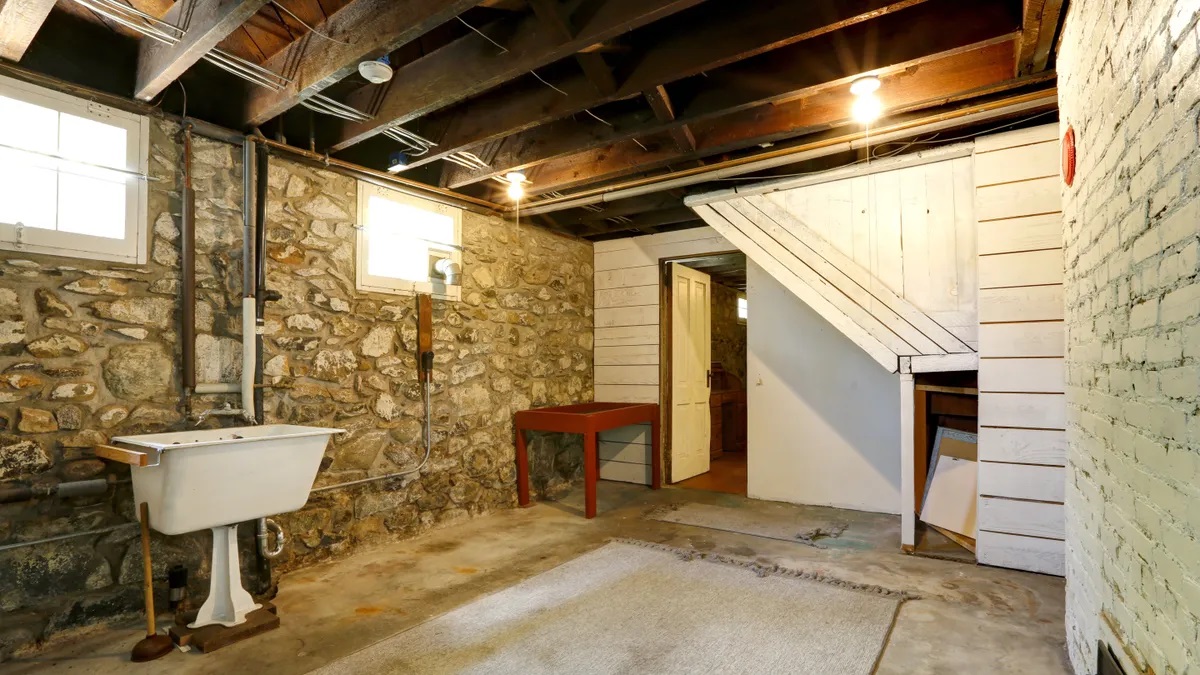

Articles
Why Does My Basement Smell Like Sewer
Modified: October 20, 2024
Read our informative articles on why your basement smells like a sewer and learn how to address this common issue.
(Many of the links in this article redirect to a specific reviewed product. Your purchase of these products through affiliate links helps to generate commission for Storables.com, at no extra cost. Learn more)
Introduction
Having a basement can be a great addition to your home, offering valuable extra space for storage, hobbies, or even a cozy living area. However, if you’ve noticed a persistent smell of sewer in your basement, it can quickly become a major concern. Not only is the odor unpleasant, but it can also be a sign of potential underlying issues that need to be addressed.
In this article, we will explore common causes of sewer smells in basements and provide steps to identify and resolve these problems. By understanding the root causes and taking the necessary steps, you can eliminate the unpleasant odor and ensure a clean and healthy environment in your basement.
Key Takeaways:
- Regularly inspect and maintain your basement to prevent sewer smells. Address visible leaks, clean P-traps, clear ventilation, and test sump pumps to ensure a clean and odor-free environment.
- Promptly fix plumbing leaks, unclog drains, and address mold growth to eliminate sewer smells. Regular maintenance and proactive measures are essential for a healthy living space.
Read more: Why Does My Washing Machine Smell Like Sewer
Common Causes of Sewer Smell in Basements
When your basement smells like sewer, there are several potential culprits that could be contributing to the unpleasant odor. Here are some common causes to be aware of:
- Damaged Sewer Pipes: Cracked or broken sewer pipes can release foul odors into your basement. This can happen due to aging, tree root intrusion, ground movement, or damage from construction work.
- Dry P-Trap: P-traps are U-shaped pipes in your plumbing system that are designed to create a water seal. This seal prevents sewer gases from entering your home. If a P-trap in your basement has dried out or become damaged, it can allow sewer odors to escape.
- Blocked Ventilation System: Your plumbing system has vent pipes that allow air to circulate, preventing negative pressure and allowing for proper drainage. If these vent pipes become blocked due to debris or animal nests, it can cause sewer gas to back up and enter your basement.
- Sump Pump Problems: A sump pump is used to prevent water accumulation in your basement. If the sump pump malfunctions or fails, it can lead to water buildup, which can contribute to sewer smells. Additionally, if the sump basin becomes contaminated with sewage, it can emit unpleasant odors.
- Plumbing Leaks: Any type of plumbing leak, such as a leaking pipe or a faulty seal, can introduce sewer odors into your basement. These leaks can occur in the walls, floor, or ceiling, and it’s crucial to address them promptly to prevent further damage and eliminate the smell.
- Clogged Drains and Toilets: A clog in your basement drains or toilets can cause sewer gases to escape. Common culprits of clogs include debris, grease buildup, or items being flushed that shouldn’t be.
- Mold and Mildew Growth: Excess moisture in your basement can lead to the growth of mold and mildew. These fungi have a distinct musty odor that can be mistaken for a sewer smell. It’s essential to address any moisture issues and properly ventilate your basement to prevent mold and mildew growth.
Now that we have identified the common causes of sewer smells in basements, let’s explore the steps you can take to identify and resolve these issues.
Damaged Sewer Pipes
Damaged sewer pipes are one of the leading causes of sewer smells in basements. Over time, sewer pipes can deteriorate due to age, ground movement, tree root intrusion, or damage from construction work. When these pipes crack or break, they can release foul odors into your basement.
To identify if damaged sewer pipes are the source of the smell, you can follow these steps:
- Perform a visual inspection: Examine the walls, floors, and ceilings of your basement for any signs of water damage or visible cracks in the pipes. Look for wet spots, discoloration, or any visible leaks.
- Check for sewer backups: If you notice frequent or recurring sewer backups in your basement, it may be an indication of damaged sewer pipes. Sewage backups can release unpleasant odors and pose a health risk, so it’s essential to address this issue promptly.
- Hire a professional plumber: If you suspect that your sewer pipes are damaged, it’s best to consult with a professional plumber who can perform a comprehensive inspection. They can use specialized equipment, such as video cameras, to conduct a thorough assessment of your sewer lines and identify any cracks or breaks.
- Repair or replace the damaged pipes: Once the extent of the damage is determined, the plumber can recommend the appropriate course of action. Depending on the severity of the damage, options may include repairing the affected sections or replacing the entire sewer line. It’s important to address the issue promptly to prevent further damage and eliminate the sewer smell in your basement.
Remember, working with a licensed and experienced plumber is crucial for accurate diagnosis and proper repairs. They have the expertise and tools to address the issue effectively and restore a clean and odor-free basement.
Dry P-Trap
A dry P-trap is another common cause of sewer smells in basements. P-traps are U-shaped pipes located beneath sinks, showers, and floor drains. They are designed to hold water, creating a seal that prevents sewer gases from entering your home. However, if a P-trap in your basement has dried out or become damaged, it can allow sewer odors to escape.
To identify and resolve a dry P-trap issue, follow these steps:
- Locate the P-trap: In your basement, identify the plumbing fixtures with P-traps, such as sinks, showers, or floor drains.
- Check for water: Carefully inspect each P-trap to see if there is water present. If the P-trap is dry, it means that the water seal has evaporated or has been depleted.
- Run water: To replenish the water in the P-trap, run water in the affected fixture for a few minutes. This will help fill the trap and create a proper water seal, blocking sewer odors from entering your basement.
- Check for leaks: While running water, inspect the P-trap and surrounding connections for any signs of leaks. If you notice any leaks, tighten the connections or replace the damaged parts.
- Maintain regular water flow: To prevent P-traps from drying out, make sure to use all fixtures in your basement regularly, including sinks and floor drains. Regular usage will help keep the traps filled with water and prevent sewer smells from occurring.
If you find that the P-traps in your basement are frequently drying out even with regular usage, it may be worth considering installing a trap primer. A trap primer is a simple device that automatically adds water to the P-trap when needed, ensuring a constant water seal. Consulting with a professional plumber can help determine the best solution for your specific situation.
By maintaining proper water levels in your P-traps and addressing any leaks promptly, you can effectively eliminate sewer smells caused by dry P-traps in your basement.
Blocked Ventilation System
A blocked ventilation system is another potential cause of sewer smells in basements. Your plumbing system relies on vent pipes to circulate air and maintain proper drainage. These vent pipes prevent negative pressure, allow for the release of sewer gases, and ensure the effective flow of wastewater. However, if these vent pipes become blocked or obstructed, sewer gases can back up and enter your basement, resulting in an unpleasant odor.
To identify and resolve a blocked ventilation system, follow these steps:
- Inspect the roof: Look for vent pipe openings on your roof. Ensure that they are free from debris, such as leaves, bird nests, or other obstructions. Use caution and consider hiring a professional if you are uncomfortable working at heights.
- Check for vent pipe openings: In your basement, locate the vent pipe openings. These are usually found near plumbing fixtures such as sinks, showers, or toilets.
- Clear any obstructions: Using a flashlight or a mirror, inspect the vent pipe openings for any signs of blockage. If you notice any debris or obstructions, carefully remove them using a long, flexible brush or a plumber’s snake. Take care not to push the blockage further into the pipe.
- Consider professional assistance: If the blockage is located higher up in the vent system or if you are unsure about how to safely clear the obstruction, it is advisable to contact a professional plumber. They have the necessary tools and expertise to remove stubborn blockages and ensure proper venting.
- Prevent future blockages: To prevent future blockages in your ventilation system, consider installing vent covers or screens. These accessories can help prevent debris and animals from entering the vent pipes while still allowing proper airflow.
Regular maintenance of your ventilation system, including inspecting and clearing any blockages, is crucial to ensure the proper functioning of your plumbing system and prevent sewer smells in your basement.
Read more: Why Does Toilet Smell Like Sewer
Sump Pump Problems
A sump pump is a critical component of your basement’s drainage system, designed to prevent water accumulation and flooding. If your basement has a sump pump, it may contribute to sewer smells if it is not functioning properly or if the sump basin becomes contaminated with sewage.
To identify and resolve sump pump problems, follow these steps:
- Check the sump pump: Locate the sump pump in your basement. Ensure that it is plugged in and receiving power. Listen for any unusual noises or vibrations, as these can be signs of a malfunctioning pump.
- Inspect the sump basin: Remove the lid of the sump basin and visually inspect its contents. If you notice standing water, debris, or sewage, it may indicate a problem with the sump pump or a backup in the sewer system.
- Test the sump pump: Fill a bucket with water and pour it into the sump basin. Observe the pump as it activates and pumps out the water. Ensure that the water is being effectively discharged away from your basement. If the pump fails to activate or is not pumping water properly, it may require repair or replacement.
- Maintain the sump pump: To prevent sump pump problems, it’s important to perform regular maintenance. This includes cleaning the sump basin, checking the pump’s float switch, and testing it periodically to ensure it is functioning correctly.
- Consider professional assistance: If you are unsure about the condition of your sump pump or if you notice any significant issues, it is advisable to contact a professional plumber or sump pump specialist. They can diagnose any problems and recommend the appropriate repairs or replacement.
Proper maintenance and regular testing of your sump pump are essential to keep your basement dry and free from sewer smells. If you suspect that the sump basin has become contaminated with sewage, it is crucial to address the issue promptly to eliminate the odor and prevent any further health hazards.
Plumbing Leaks
Plumbing leaks can be a significant cause of sewer smells in basements. Any type of leak in your plumbing system, whether it’s a leaking pipe or a faulty seal, can introduce sewer odors into your basement and create an unpleasant living environment.
To identify and resolve plumbing leaks, follow these steps:
- Visual inspection: Carefully inspect the walls, floors, and ceilings of your basement for any signs of water damage, such as damp spots, discoloration, or mold growth. Pay attention to areas near plumbing fixtures and pipes.
- Check for dripping or pooling water: Look for any signs of water dripping or pooling in your basement. This can indicate an active plumbing leak that requires immediate attention.
- Observe water meter: Turn off all water sources in your home, including faucets, showers, and toilets. Monitor the water meter for any fluctuations. If the meter continues to show water usage even when everything is turned off, it may indicate a hidden plumbing leak.
- Listen for sounds of running water: Pay attention to any sounds of running water that you can hear in the walls or floors of your basement. These sounds could be a clear indication of a plumbing leak.
- Hire a professional plumber: If you suspect a plumbing leak in your basement or if you are unable to locate the source of the sewer smell, it is recommended to contact a licensed plumber. Plumbers have specialized equipment to detect and locate hidden leaks, such as thermal imaging cameras and leak detection devices.
- Repair the leak: Once the source of the plumbing leak is identified, a professional plumber can recommend the most appropriate repair solution. Depending on the location and severity of the leak, it may involve repairing or replacing pipes, tightening connections, or replacing faulty seals.
It’s crucial to address plumbing leaks promptly to prevent further damage, eliminate the sewer smell, and maintain a clean and healthy environment in your basement.
Clogged Drains and Toilets
Clogged drains and toilets can be a common cause of sewer smells in basements. When a drain or toilet gets clogged, it can cause sewer gases to escape and create an unpleasant odor. It’s important to address these clogs promptly to restore proper drainage and eliminate the smell.
To identify and resolve clogged drains and toilets, follow these steps:
- Identify the clogged fixture: Determine which drain or toilet in your basement is experiencing the issue. This can help you focus on resolving the specific clog.
- Use a plunger: For clogged toilets, try using a plunger to dislodge the blockage. Create a tight seal around the drain hole and plunge vigorously to create suction and force the clog to move.
- Try a drain snake: For clogged drains, a drain snake (or auger) can be used to remove the blockage. Insert the snake into the drain and twist it while pushing it further inside. This should help break up the clog and restore proper drainage.
- Chemical drain cleaners: Consider using a chemical drain cleaner if plunger or snake methods do not solve the issue. Follow the instructions carefully and use this method as a last resort, as some chemical cleaners can be harsh and potentially damage your plumbing system.
- Prevent future clogs: To prevent future clogs, avoid flushing or draining items that can cause blockages, such as grease, feminine hygiene products, paper towels, or excessive amounts of toilet paper. Properly dispose of these items in the trash instead. Also, consider using drain guards to catch hair and debris in your drains.
- Consider professional assistance: If the clog persists despite your best efforts, or if you are uncomfortable performing the steps yourself, it’s advisable to contact a professional plumber. They have the expertise and tools to tackle stubborn clogs and ensure proper drainage in your basement.
By addressing clogged drains and toilets promptly and implementing preventive measures, you can effectively eliminate sewer smells caused by these common plumbing issues in your basement.
Mold and Mildew Growth
Mold and mildew growth in your basement can contribute to a musty smell that is often mistaken for a sewer smell. Excess moisture in your basement provides the perfect conditions for mold and mildew to thrive, and their presence can not only cause unpleasant odors but also pose a health risk.
To identify and address mold and mildew growth, follow these steps:
- Inspect for visible signs: Look for any visible signs of mold or mildew growth in your basement. Check walls, ceilings, floors, and any areas where moisture tends to accumulate.
- Check for dampness: Use a moisture meter to detect any areas of high moisture or dampness. Pay close attention to areas near plumbing fixtures, windows, or areas where water may be seeping in from outside.
- Address moisture sources: Identify the sources of excess moisture in your basement and take steps to address them. This could include fixing any leaks, improving ventilation, using dehumidifiers, or waterproofing the walls and floors.
- Clean and remove mold and mildew: If you discover mold or mildew growth in your basement, it’s crucial to clean and remove it properly. Wear protective gear, such as gloves and a mask, and use a solution of bleach and water or a commercial mold and mildew cleaner. Scrub the affected areas thoroughly and dispose of any contaminated materials properly.
- Improve ventilation: Proper ventilation is key to preventing mold and mildew growth. Ensure that your basement has adequate airflow by opening windows, using fans, or installing a ventilation system. This will help reduce moisture and maintain a fresh environment.
- Maintain regular cleaning: Regularly clean and inspect your basement to prevent the recurrence of mold and mildew. Remove any standing water, fix leaks promptly, and keep the area well-ventilated.
If the mold or mildew growth is extensive or if you are unable to effectively address the issue on your own, it is advisable to consult with a professional mold remediation specialist. They can assess the situation, provide specialized services, and ensure proper remediation of the mold and mildew.
By addressing mold and mildew growth and implementing preventive measures, you can eliminate the musty smell in your basement and promote a healthier living environment.
Check for any leaks in your basement plumbing and ensure that all floor drains have water in them to prevent sewer gas from entering your home. If the smell persists, consider contacting a professional plumber to inspect your sewer lines.
Read more: Why Does My Basement Smell Like Sulfur
Steps to Identify and Resolve Sewer Smell
Dealing with a sewer smell in your basement can be unpleasant, but with some investigative work and proactive measures, you can identify and resolve the issue. Here are the steps to help you tackle the sewer smell:
- Check for visible leaks and damage: Inspect the walls, floors, and ceilings of your basement for any signs of water damage, such as wet spots, discoloration, or visible leaks. Look for damaged pipes, cracks, or loose connections that could be allowing sewer gases to escape.
- Inspect and clean P-traps: P-traps, located beneath sinks, showers, and floor drains, create a water seal to prevent sewer odors from entering your home. Check if any P-traps in your basement have dried out or become damaged. If so, run water to replenish the water seal or consider installing trap primers.
- Clear the ventilation system: Check the roof for any obstructions in the vent pipe openings. Inspect the vent pipe openings in your basement for blockages. Clear any debris or obstructions that may be preventing proper airflow and causing sewer gases to back up.
- Test and maintain the sump pump: Ensure that your sump pump is in working order and effectively pumping out water from your basement. Regularly inspect and clean the sump basin to prevent sewage contamination. Repair or replace a malfunctioning sump pump to eliminate sewer smells.
- Fix plumbing leaks: Any plumbing leaks, whether in pipes or seals, can introduce sewer odors. Inspect plumbing fixtures and connections for leaks and promptly repair or replace any damaged components. This will help prevent further water damage and eliminate the sewer smell.
- Unclog drains and toilets: Clogged drains and toilets can cause sewer gases to escape. Use plungers, drain snakes, or chemical drain cleaners to clear any blockages. Ensure proper disposal of waste and avoid flushing items that can cause clogs.
- Address mold and mildew issues: Excess moisture in your basement can lead to mold and mildew growth, which can produce a musty odor. Inspect for visible signs of mold and mildew, address moisture sources, clean and remove any existing growth, and improve ventilation to prevent future issues.
Remember, proper maintenance, regular inspections, and prompt repairs are essential to eliminate sewer smells in your basement. If you are unsure about identifying or resolving the issue on your own, it’s advisable to seek assistance from a professional plumber or mold remediation specialist. They will have the expertise and tools necessary to diagnose and address the problem effectively.
By following these steps and implementing preventive measures, you can restore a clean and odor-free environment in your basement.
Check for Visible Leaks and Damage
When you notice a sewer smell in your basement, the first step is to conduct a thorough inspection for visible leaks and damage. This will help identify any potential sources of the odor and allow you to take appropriate action to resolve the problem. Here’s how you can check for visible leaks and damage:
- Observe the walls, floors, and ceilings: Carefully examine the surfaces of your basement, paying close attention to areas near plumbing fixtures, pipes, and drains. Look for any signs of water damage, such as wet spots, dampness, discoloration, or peeling paint. These could indicate leaks or damage that may be contributing to the sewer smell.
- Inspect the pipes: Check the visible pipes in your basement for any signs of cracks, corrosion, or loose connections. Run your hand along the pipes to feel for any moisture or dampness. Pay extra attention to areas where pipes meet walls or floors, as these junctions are common places for leaks to occur.
- Examine plumbing fixtures: Inspect sinks, toilets, showers, and other plumbing fixtures for any leaks or loose connections. Look for water pooling around the base of toilets or sinks, dripping faucets, or signs of water damage in the surrounding areas.
- Check for water stains or odors: Look for water stains on walls, floors, or ceilings, as these can indicate ongoing or previous leaks. Additionally, sniff around the area to detect any musty or foul odors that may be associated with water damage or mold growth.
- Test the water supply lines: Gently press and inspect the water supply lines connected to toilets, sinks, and other fixtures. If you notice any dampness, water droplets, or spray, it may indicate a leak in these lines.
- Address any visible issues: If you identify any visible leaks or damage, it’s important to take immediate action to prevent further water damage and eliminate the sewer smell. Tighten loose connections, repair or replace damaged pipes, and fix any plumbing fixtures that are leaking. If the damage is significant or you are unsure about how to proceed, consider contacting a professional plumber to assist you.
By thoroughly inspecting for visible leaks and damage, you can identify and resolve any issues that may be causing the sewer smell in your basement. Quick and effective action will not only eliminate the odor, but also help maintain the structural integrity of your plumbing system and prevent further damage in the future.
Inspect and Clean P-Traps
The next step in identifying and resolving a sewer smell in your basement is to inspect and clean the P-traps. P-traps are U-shaped pipes located beneath sinks, showers, and floor drains, designed to create a water seal that prevents sewer gases from entering your home. Over time, these traps can become dry or clogged, leading to the escape of unpleasant odors. Here’s how you can inspect and clean your P-traps:
- Locate the P-traps: Identify the plumbing fixtures in your basement that have P-traps. Common locations include sinks, showers, and floor drains. It’s important to check all P-traps to ensure they are functioning properly.
- Check for water: Inspect each P-trap to see if there is water present. A properly functioning P-trap should contain a small amount of water, creating a seal that prevents sewer odors from passing through. If a P-trap is dry, it means the water seal has evaporated, possibly allowing the sewer smell to escape.
- Run water: To replenish the water in the P-traps, run water in the affected fixtures for a few minutes. This will help fill the traps and restore the water seal. Be sure to use sufficient water flow to ensure the trap is adequately filled.
- Check and clean the trap components: Remove the trap covers or plugs of each P-trap and inspect the components for any clogs or debris. Use a wire brush or pipe cleaner to remove any buildup that may be obstructing the trap. Cleaning the trap thoroughly will ensure proper water flow and eliminate potential odor sources.
- Dispose of debris properly: After cleaning the P-trap, dispose of any debris or sediment in a garbage bag. Avoid rinsing it into other drains, as this can cause further clogs and plumbing issues.
- Repeat the process periodically: It’s recommended to inspect and clean your P-traps regularly to prevent odors. Set a schedule to check them every few months and clean as needed. Regular maintenance will ensure the effective prevention of sewer smells in your basement.
By inspecting and cleaning the P-traps in your basement, you can restore the water seal and prevent sewer odors from entering your home. Remember to practice proper maintenance to keep your P-traps functioning correctly and eliminate any potential sources of the sewer smell.
Clear Ventilation System
Clearing the ventilation system is an essential step in identifying and resolving a sewer smell in your basement. The ventilation system plays a crucial role in maintaining proper airflow and preventing the buildup of sewer gases. However, if the vent pipes become blocked or obstructed, it can lead to unpleasant odors in your basement. Here’s how you can clear your ventilation system:
- Inspect the roof: Begin by examining the roof for any obstructions in the vent pipe openings. Look for visible signs of debris, such as leaves, branches, or animal nests, that may be blocking the airflow. Use caution and appropriate safety measures if you need to access the roof.
- Locate vent pipe openings: In your basement, locate the vent pipe openings that are typically found near plumbing fixtures such as sinks, showers, or toilets. These pipes allow for the release of sewer gases and help maintain proper drainage.
- Clear obstructions: Using a flashlight or a mirror, inspect the vent pipe openings for any signs of blockage. If you notice debris or obstructions, it’s important to clear them to restore proper airflow. You can use a long, flexible brush or a plumber’s snake to carefully remove the blockage. Take care not to push the debris further into the pipe.
- Consider professional assistance: If the blockage is located higher up in the vent system or if you are unsure about how to safely clear the obstruction, it is advisable to contact a professional plumber. They have the necessary tools and expertise to remove stubborn blockages and ensure proper venting.
- Install vent covers or screens: To prevent future blockages in your ventilation system, consider installing vent covers or screens. These accessories can help prevent debris and animals from entering the vent pipes while still allowing proper airflow. Regularly inspect and clean these covers to ensure they remain clear and functional.
- Maintain good airflow: Proper ventilation is key to preventing sewer smells in your basement. Ensure that your basement has adequate airflow by keeping doors and windows open when possible and using fans or dehumidifiers to promote air circulation. Keep vents and air ducts free from obstruction to facilitate proper ventilation.
By clearing your ventilation system and ensuring proper airflow, you can significantly reduce the chances of sewer smells in your basement. Regular maintenance and proactive measures will help maintain a clean and odor-free environment.
Read more: Why Does Laundry Room Smell Like Sewer
Test and Maintain Sump Pump
Testing and maintaining your sump pump is an important step in addressing a sewer smell in your basement. The sump pump prevents water accumulation and flooding by pumping out excess water from the sump basin. If the sump pump malfunctions or the sump basin becomes contaminated with sewage, it can contribute to unpleasant odors in your basement. Here’s how you can test and maintain your sump pump:
- Locate your sump pump: Identify the location of your sump pump in your basement. It is usually found in a designated sump pit or basin.
- Confirm power supply: Ensure that the sump pump is properly connected to a power source and that it is receiving power. Check the circuit breaker or fuse box to make sure there are no issues with the electrical supply.
- Check the sump basin: Remove the lid of the sump basin and inspect its contents. If you notice standing water, debris, or sewage, it may indicate a problem with the sump pump or a backup in the sewer system. This can contribute to the sewer smell in your basement.
- Test the sump pump: Fill a bucket with water and pour it into the sump basin until the float activates the pump. Observe the pump as it pumps out the water. Ensure that the water is being effectively discharged away from your basement. If the pump fails to activate or is not pumping water properly, it may require repair or replacement.
- Maintain the sump pump: Regular maintenance of your sump pump is crucial to its proper functioning. Clean the sump basin, removing any debris or sediment that may accumulate. Check the float switch to ensure it moves freely and isn’t obstructed. Test the backup battery (if applicable) to ensure it is holding a charge. Be sure to follow the manufacturer’s instructions for maintenance and consult a professional if you are unsure about any specific maintenance tasks.
- Consider a backup system: To enhance the reliability of your sump pump and reduce the risk of sewer smells due to pump failure, consider installing a battery backup system. This backup system will activate in the event of a power outage or pump failure, ensuring that your basement remains protected and odor-free.
By regularly testing and maintaining your sump pump, you can prevent water buildup, sewage contamination, and the associated sewer smells in your basement. If you encounter any issues or have concerns about your sump pump, it’s best to consult with a professional plumber or sump pump specialist who can provide expert guidance specific to your system.
Fix Plumbing Leaks
Fixing plumbing leaks is crucial to addressing a sewer smell in your basement. Any type of plumbing leak, whether it’s a leaking pipe or a faulty seal, can introduce sewer odors and contribute to an unpleasant living environment. Here are the steps to fix plumbing leaks:
- Identify the source: Inspect plumbing fixtures, pipes, and connections in your basement to locate the source of the leak. Look for water stains, dampness, or active dripping that may indicate a leak.
- Tighten loose connections: If you find any loose connections, use a wrench or adjustable pliers to tighten them. Be careful not to overtighten, as this may cause further damage.
- Repair damaged pipes: If the leak is coming from a damaged pipe, you have a few options for repair depending on the extent of the damage. For smaller cracks or holes, you can use epoxy putty or pipe repair tape to seal the leak temporarily. However, it’s recommended to consult a professional plumber for a permanent repair or replacement to ensure the integrity of your plumbing system.
- Replace faulty seals: Leaks around plumbing fixtures may be due to faulty seals. For example, a worn-out wax ring seal around a toilet can cause sewer odors to escape. In such cases, remove the fixture, clean the area, and install a new seal or gasket to create a proper seal and eliminate the leak.
- Address hidden leaks: In some cases, leaks may be hidden behind walls or under floors. Signs of hidden leaks include dampness, water stains, or difficulty in identifying the source. If you suspect a hidden leak, it’s advisable to seek the assistance of a professional plumber who can use specialized equipment to locate and repair the leak.
- Prevent future leaks: Regular maintenance and proactive measures can help prevent future plumbing leaks. Insulate exposed pipes to protect against freezing and pipe bursts. Avoid using excessive force when operating valves and faucets. Monitor water pressure to prevent excessive stress on the pipes. And, be mindful of any changes in water usage, as sudden spikes or drops could indicate a hidden leak.
By promptly fixing plumbing leaks in your basement, you can prevent further water damage, eliminate the sewer smell, and maintain a healthy living environment. If you are unsure about how to repair a leak or if you encounter complex plumbing issues, it’s best to consult with a professional plumber who can provide expert advice and ensure proper repairs.
Unclog Drains and Toilets
Unclogging drains and toilets is essential in addressing a sewer smell in your basement. Clogs can lead to the backup of sewage and cause sewer odors to escape into your living space. Here are the steps to unclog drains and toilets:
- Identify the clogged fixture: Determine which drain or toilet in your basement is experiencing the issue. This will help you focus on resolving the specific clog.
- Use a plunger: For a clogged toilet, use a plunger to create suction and dislodge the blockage. Place the plunger over the drain hole and push down firmly, then pull up sharply. Repeat this plunging motion several times until the water starts to drain. Use a toilet auger or snake for stubborn or deep clogs.
- Try a drain snake: For clogged drains, use a drain snake (also known as a plumber’s snake) to remove the blockage. Insert the snake into the drain and rotate it while moving it back and forth to break up the clog. Pull out the snake carefully, removing any debris that comes out with it.
- Use a natural drain cleaner: If plunging or snaking doesn’t resolve the clog, you can try using a natural drain cleaner. Pour a mixture of baking soda and vinegar down the drain, followed by hot water. Allow it to sit for some time, then rinse with more hot water. This combination can help dissolve minor clogs.
- Avoid chemical drain cleaners: While chemical drain cleaners can be effective, they often contain harsh chemicals that can be harmful to your plumbing system and the environment. It’s best to avoid using them as a first line of defense, as they can weaken pipes over time.
- Prevent future clogs: To prevent future clogs, be mindful of what goes down your drains and toilets. Avoid flushing items that don’t break down easily, such as paper towels or sanitary products. Use drain guards to catch hair and debris in the shower or sink drains, and clean these guards regularly.
- Seek professional help: If you are unable to unclog the drain or toilet on your own, or if the clog seems severe or persistent, it’s best to seek the assistance of a professional plumber. They have the expertise and tools to tackle stubborn clogs and ensure proper drainage.
By effectively unclogging drains and toilets in your basement, you can restore proper drainage, prevent sewer odors, and maintain a clean and odor-free environment. Remember to exercise caution and seek professional help if needed, especially if you are unsure about handling complex or stubborn clogs.
Address Mold and Mildew Issues
Addressing mold and mildew issues is crucial when dealing with a sewer smell in your basement. Excess moisture in your basement can create the perfect environment for mold and mildew growth, which can lead to musty odors and pose health risks. Here are the steps to address mold and mildew issues:
- Inspect for visible signs: Conduct a thorough inspection of your basement, paying close attention to walls, ceilings, and floors, as well as any areas where moisture is likely to accumulate. Look for visible signs of mold and mildew, such as discoloration, fuzzy or powdery growth, or a musty odor.
- Address moisture sources: Identify and address the sources of excess moisture in your basement. Common causes include leaks, condensation, poor insulation, or inadequate ventilation. Fix any leaks promptly and consider installing dehumidifiers or improving ventilation to reduce humidity levels.
- Clean and remove mold and mildew: If you discover mold or mildew growth in your basement, it’s important to clean and remove it properly. Wear protective gear, such as gloves, a mask, and eye protection. Scrub the affected areas with a mixture of water and detergent or a commercial mold and mildew cleaner. Use a brush or sponge to remove the growth and thoroughly rinse the area with clean water.
- Dispose of contaminated materials: If any materials, such as carpeting, drywall, or insulation, are extensively contaminated or cannot be cleaned, they may need to be removed and properly disposed of. Consult with professional mold remediation services if necessary.
- Improve ventilation: Enhance the ventilation in your basement to prevent future mold and mildew growth. Open windows, install exhaust fans, or use a dehumidifier to increase airflow and reduce humidity levels.
- Monitor moisture levels: Regularly check the moisture levels in your basement using a hygrometer. Aim to keep the humidity below 60 percent. If necessary, use a dehumidifier to maintain optimal humidity levels.
- Prevent future growth: To prevent future mold and mildew growth, continue to address moisture issues, promptly repair any leaks, and regularly clean and maintain your basement. Ensure proper ventilation, especially in areas prone to moisture accumulation.
When dealing with extensive mold growth or if you are unsure about how to address the issue, it is advisable to seek the help of professional mold remediation services. They have the expertise and equipment to handle the situation safely and effectively.
By addressing mold and mildew issues, you can eliminate the musty odor, improve air quality, and maintain a healthy living environment in your basement.
Read more: Why Does My Bathtub Smell Like Sewage
Conclusion
A sewer smell in your basement can be a cause for concern, but by following the steps outlined in this article, you can identify and resolve the issue effectively. From checking for visible leaks and damage to addressing mold and mildew growth, each step plays a vital role in eliminating the sewer smell and maintaining a clean and odor-free basement.
By inspecting your plumbing system for visible leaks and damage, you can pinpoint the source of the odor and take appropriate action to repair or replace any faulty components. Cleaning and maintaining P-traps, as well as clearing any obstructions in the ventilation system, help ensure proper drainage and airflow, reducing the risk of sewer smells.
Testing and maintaining your sump pump is crucial for preventing water buildup and sewage contamination, which can contribute to unpleasant odors in your basement. Additionally, fixing plumbing leaks, unclogging drains and toilets, and addressing mold and mildew growth are essential steps in eliminating the sewer smell and maintaining a healthy living environment.
Remember, prevention is key when it comes to sewer smells in your basement. Regular maintenance, inspections, and proactive measures such as proper waste disposal and good ventilation help minimize the chances of encountering sewer odor issues in the future.
If you are unsure or unable to address the sewer smell on your own, it’s always advisable to seek professional assistance from a licensed plumber or mold remediation specialist. They have the expertise and tools necessary to handle complex situations and provide accurate solutions.
By taking the necessary steps outlined in this article and being proactive in your basement maintenance, you can ensure a fresh, odor-free, and healthy environment for you and your family to enjoy.
Frequently Asked Questions about Why Does My Basement Smell Like Sewer
Was this page helpful?
At Storables.com, we guarantee accurate and reliable information. Our content, validated by Expert Board Contributors, is crafted following stringent Editorial Policies. We're committed to providing you with well-researched, expert-backed insights for all your informational needs.
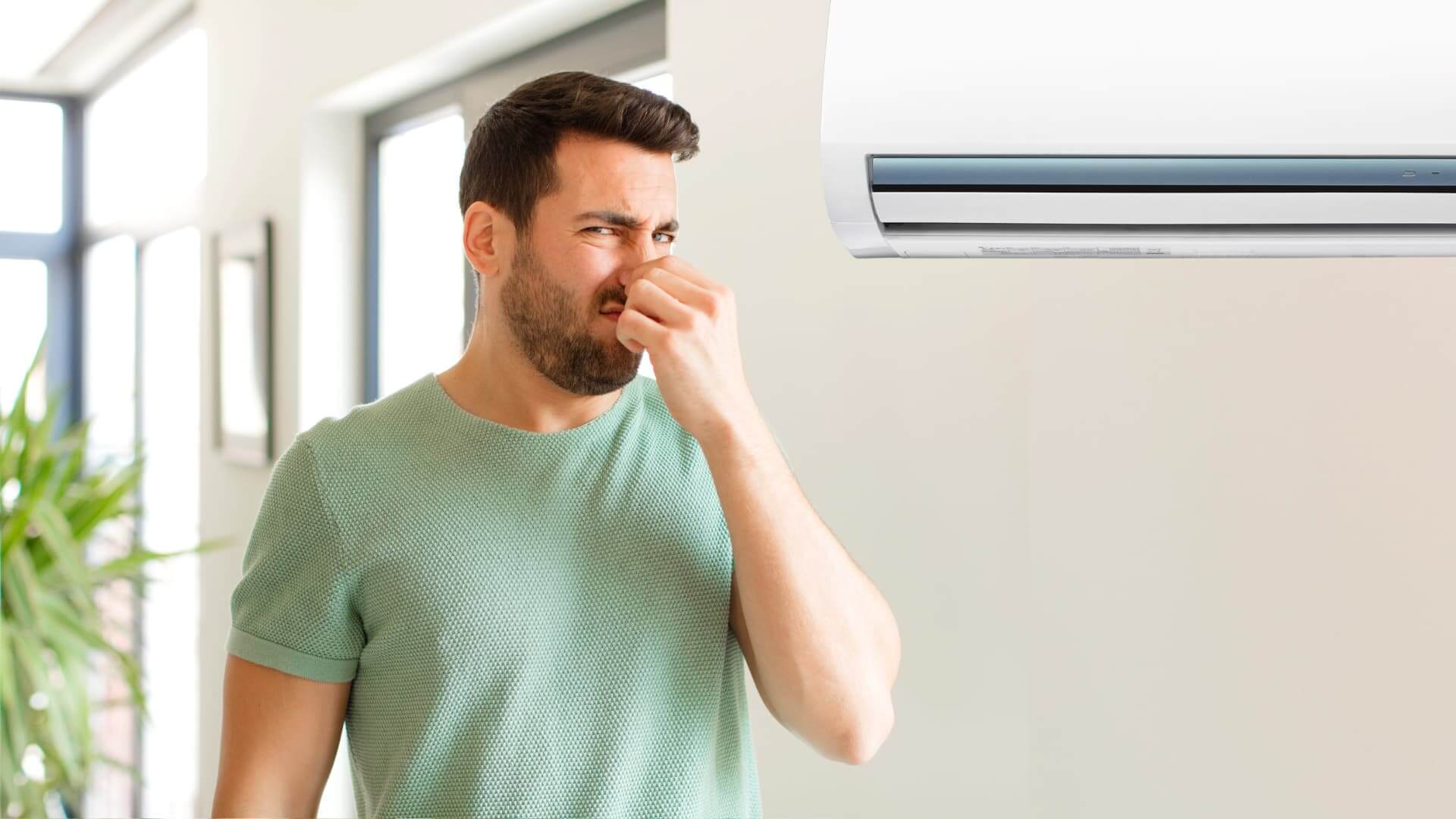

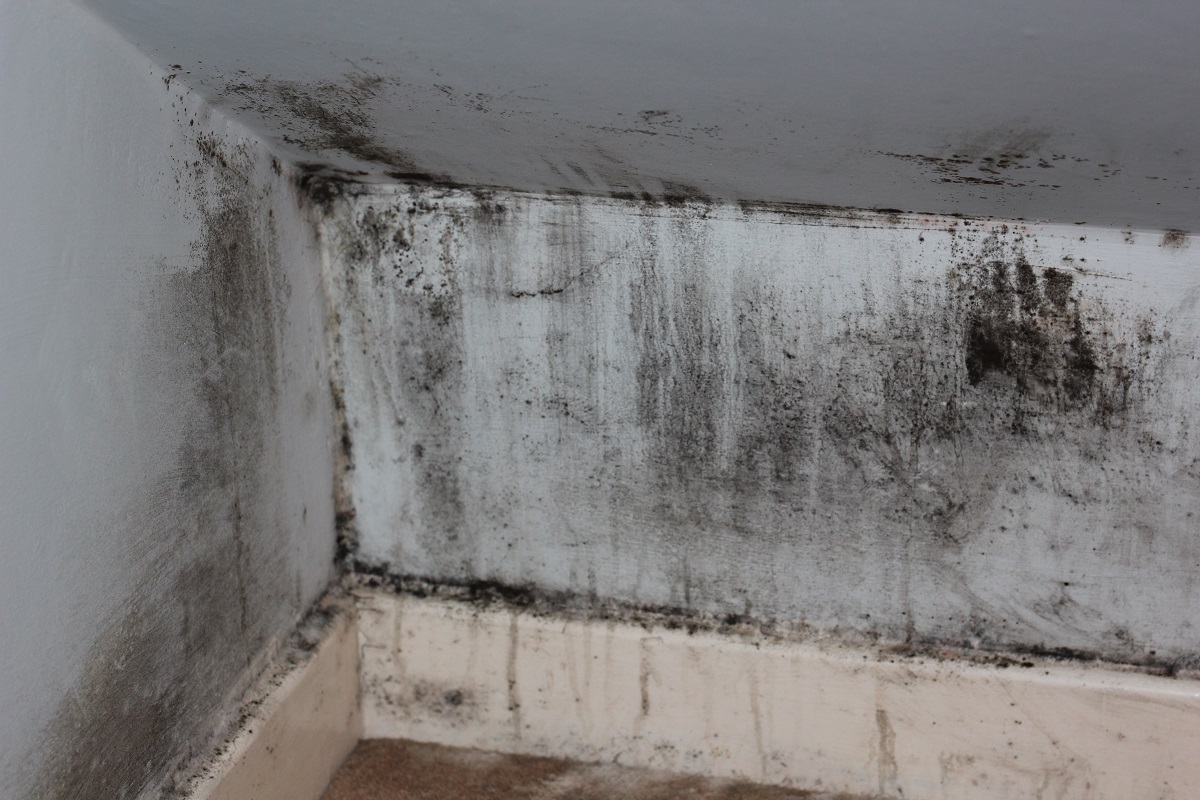


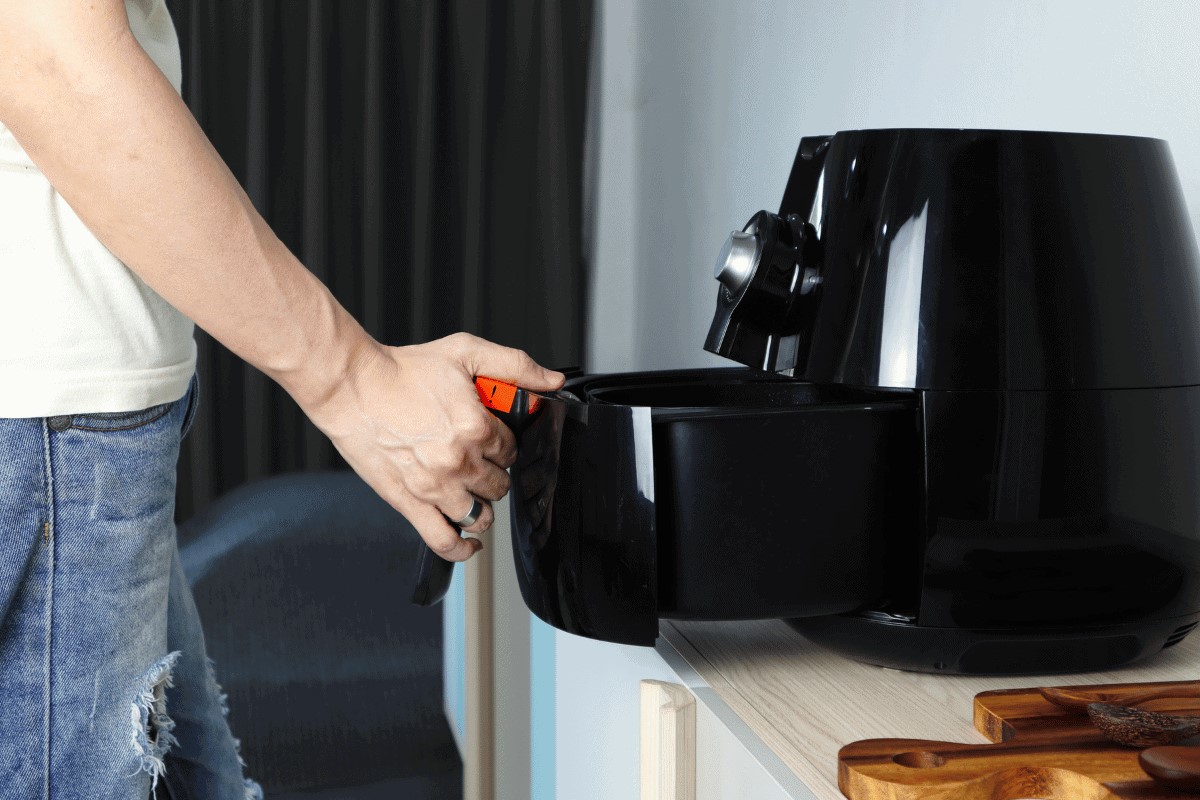

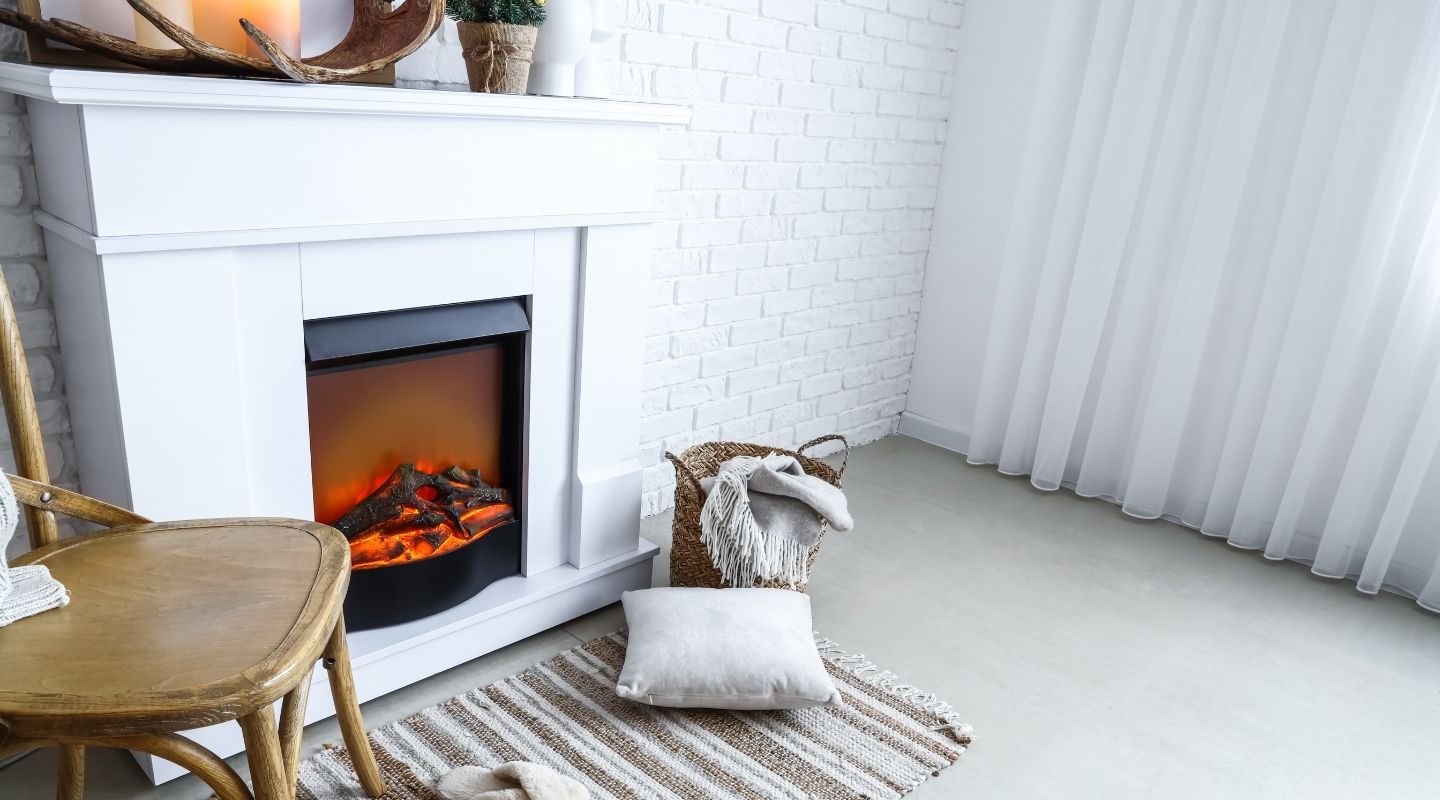
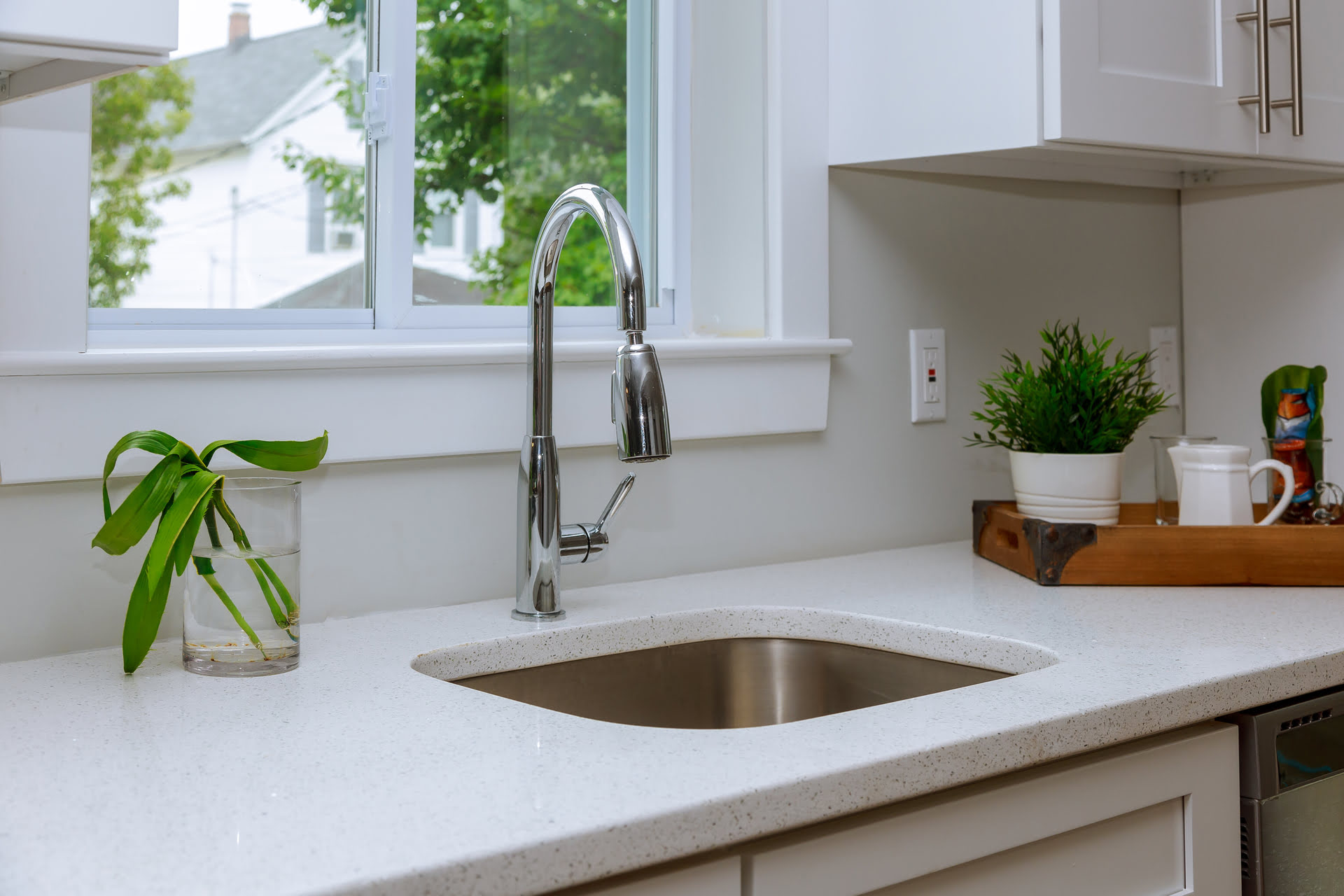
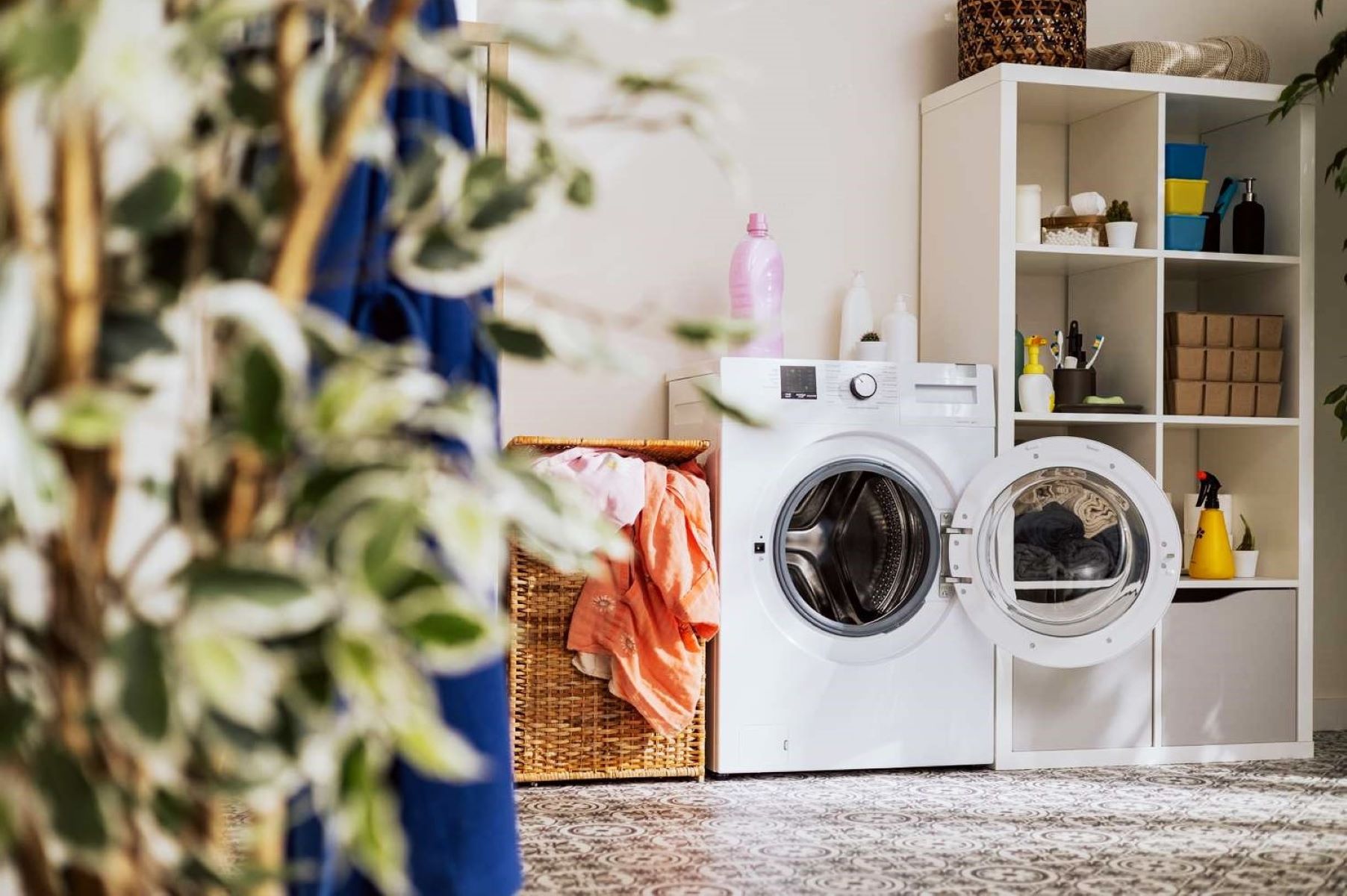
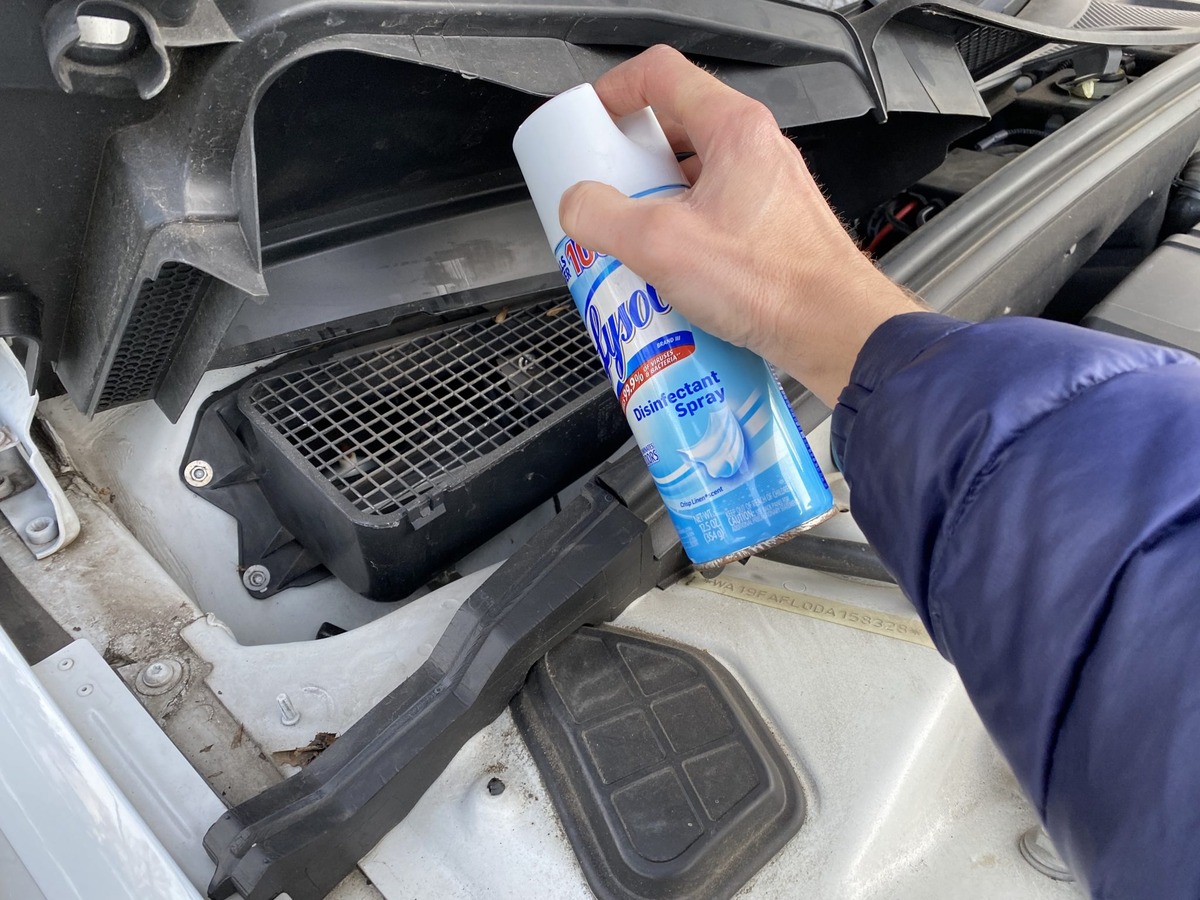

0 thoughts on “Why Does My Basement Smell Like Sewer”